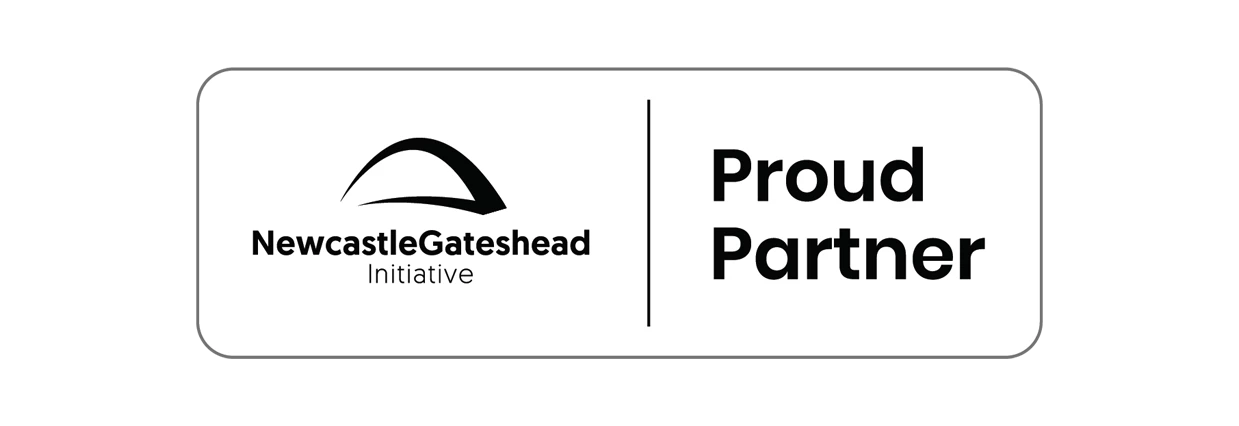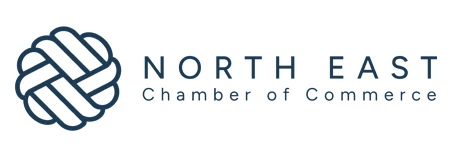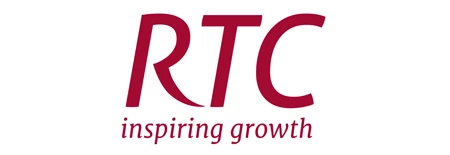Partner Article
Collaboration in the North East - underdone or oversold?
Digital Leaders North East Salon: Collaboration underdone or oversold?
On Thursday 8th May, thirty individuals gathered together for the fourth Digital Leaders North East Salon to discuss the topic of collaboration, and, more specifically:
Do we know how to help organisations and networks to work together effectively? Are these ways of working appropriate? Is the way we collaborate now a good way for building for the future? What resources need to be put in place to support better joining-up? And who should be collaborating around the production of these resources? What role does Digital play in the future of collaboration?
Three lead discussants shared their insights and personal experiences of collaboration, which sparked a lively debate among the rest of the group.
KEY THEMES TO EMERGE FROM THE SALON
Intellectual Property
“Whether you’re collaborating virtually or in person, it’s about clear conversations every step of the way.”
Intellectual Property (IP) was one of the first issues raised at the roundtable and it was cited as a classic example of a redline in collaboration. On a positive note, there seemed to be a general consensus that innovation increases through collaboration, and therefore more intellectual property is created as a result of collaboration. “I think there’s confusion between collaboration and co-operation,” one discussant contributed, “collaboration is about creating something new.”
However, concerns were voiced about the understanding of IP. One salon attendee shared a telling anecdote from a meeting he’d attended earlier that day, which highlights that projects can be over complicated due to a lack of understanding about IP ownership. They had spent the day in discussions with eight parties sitting around one table discussing intellectual property for a technology that will be deployed in Asia. Each party involved wants to control their own bit of the project’s IP but they all have different concepts of what they mean by ‘intellectual property’. Specific elements of the project’s IP are vital to each party so they can commercially develop them later, but the group hasn’t even got close to being able to discuss the intricacies of the IP. They quickly realised that the best thing to do was to put the intellectual property to one side and define the commercial basis of the project much more clearly first, and then agree the IP issues after that.
Another attendee reminded the group about Professor Ian Hargreaves’ independent review of IP and growth. Ten recommendations in his report were widely accepted in the Government’s response issued on 3 August 2011, but the attendee was doubtful whether any of these proposed changes had actually been implemented.
The discussion moved onto the matter of trust in collaboration, and the group concurred that “successful collaboration is rooted in trust and mutual respect.” Although digital tools increase the speed and scope of collaboration, digital tools were considered by one contributor to act as hindrance to collaboration: “It takes a lot for humans to trust each other. When you add digital, it makes it even harder for people to trust each other.”
International collaboration
“It’s so clear that developing parts of the world want what we have to offer and all these different technologies are in huge demand. The oil and gas industry gets it very, very right. Other industries get it very, very wrong”.
Cultural issues and politics were stressed as two barriers to international collaboration. Several discussants warned that trying to collaborate with people in other countries that work in different time zones and use different languages is a challenge. Understanding how business operates and people work in different countries, and having an awareness of the ethics and politics in different countries is of crucial importance for collaboration. It was suggested that, for the North East, it is “critical to get a shared understanding of how business in the region can collaborate internationally”.
Businesses should not be intimidated by international collaboration and were advised to look for similarities in other businesses abroad because “similarities build trust”, which in turn aids collaboration.
The issue of the North East’s identity and how we are perceived by others external to the region was also raised. The discussion concluded that the North East must raise its profile in order to collaborate internationally. One discussant stated: “There are a lot of reasons why businesses wouldn’t want to come to the North East. Our biggest collaborative challenge is to address that - because if we don’t, we’ll drop off the page.” The discussant continued to highlight that the North East has dropped off the map, quite literally. “If you open Google Maps’ homepage, Newcastle is not on it.”
Cross sector collaboration
“If you collaborate, you grow the pie for everyone.”
As well as collaborating across countries, collaboration across various sectors and industries and across different sized organisations is essential. There are some very powerful networks in the region according to the salon attendees, and businesses need to find out how to link with them.
It was suggested at the salon that businesses look to Subsea North East and Dynamo North East as examples. There are a number of different communities in the North East that are doing different things in their own industries and sectors, but it’s important that there is cross-sector collaboration to find out how best other organisations can add value to what they are doing.
The fact that collaboration opportunities are not always obvious was touched on, and many of the discussants agreed that SMEs should look to their competitors for opportunities to collaborate. The creative sector was cited as an example where this happens a lot, with smaller agencies collaborating on larger projects and contracts.
Larger companies were urged to post information about how SMEs can collaborate with them. “Business of the same size cluster together, but we need to have vertical networking. We need interaction with big companies.” One discussant actually felt it was easier for SMEs to collaborate internationally than it was in the UK.
Academia
“It’s about managing the expectations because I think a lot of collaborations fall down because expectations haven’t been met”.
The salon revealed that collaboration is already happening in pockets of academia. However, university culture is “what’s yours is mine and what’s mine is mine”, according to one discussant. Digital leaders should address changing cultures in academic organisations and encourage universities to collaborate.
Collaborative projects for sharing information, such Jisc e-portfolios have been tried in the past but “were a bit like Paris Hilton”- staff couldn’t work out what they were for. The attempt to over integrate student information resulted in very little information actually being shared. The idea you can share everything is part of the problem, not the solution.
Internal collaboration
“Collaboration is a methodology first. It needs to go back to basics, it wasn’t rooted in software. My view is to get people to fully understand agile working methodologies and allow the technology to support that.”
The majority of the evening’s debate focused on business-to-business collaboration, but peer-to-peer and internal collaboration was also discussed. Digital tools such as Twitter, Facebook, LinkedIn and Skype were praised for enabling peers to communicate within one another with speed and at reach. When it comes to mixing these digital tools with employees, the salon revealed that this can pose problems. Giving employees access to an organisation’s social networking profiles means you have to spend more time vetting posts, according to one contributor.
One issue for organisations is that not everybody is up to date with technology, or has the necessary skills to use it. One attendee was experiencing difficulties with a collaborative partner who simply refuses to use computers.
The increasingly varied range of peer-to-peer communication tools can also hamper collaboration. The fact that some people prefer to communicate using Facebook groups, while others prefer to use texting or emailing, making it difficult to hold group discussions, was underlined during the salon.
One discussant explained that their business uses a cloud-based, online project management tool, but felt that it’s possible to waste a lot of time with these tools if staff haven’t been trained properly. Another discussant strongly felt that “digital prevents people collaborating” and project tools such as Basecamp were not right for their business because “face-to-face always wins”.
The salon drew attention to the fact that it is particularly hard for public sector bodies to collaborate with others due to sensitive data issues. They use corporate IT systems to protect their sensitive data, which makes it hard for councils to collaborate with organisations who don’t have access to these systems.
Educating people to collaborate
“It all comes down to recognising that you’re interlacing and interweaving fresh, new opportunities to collaborate in a fabric that’s already there”.
The varied and thought-provoking discussion highlighted the need to educate people so that they fully understand how to collaborate and the process by which they can collaborate.
People have to be clear about the risks of poorly-managed collaboration, the potential rewards when it is done well and the leadership qualities required to make collaboration a success.
The step from networking with people to collaborating with them is a big one. It isn’t something that’s taught it’s something that’s learnt.
What do collaborative projects such as Subsea North East and Dynamo have in common? The collaboration was not forced upon anyone – in both cases there was a mutual goal/purpose, born out of necessity and driven by need.
KEY OUTCOMES
There were a number of key messages that came out of the salon discussions, and potential action points for everyone involved in the group to consider:
Collaboration is about people first – all people involved in a collaborative project need to understand each other and their individual objectives in order to build empathy and trust. There’s a big difference between collaboration and successful collaboration. Lots of lessons can be learned from both, and it’s important that we educate people in the region by sharing past experiences Collaboration is a methodology. It needs to go back to basics so that people fully understand agile working methodologies and allow the technology to support that. We need to be aware of the opportunities that collaboration brings to the individual, to the organisation, to the region and to the country.
This was posted in Bdaily's Members' News section by My Digital Biz .
Enjoy the read? Get Bdaily delivered.
Sign up to receive our daily bulletin, sent to your inbox, for free.








 A welcome step forward – but let’s keep pushing
A welcome step forward – but let’s keep pushing
 Industrial strategy 'can drive business forward'
Industrial strategy 'can drive business forward'
 Industrial strategy 'can be game-changer we need'
Industrial strategy 'can be game-changer we need'
 Driving skills forward with near £100,000 boost
Driving skills forward with near £100,000 boost
 What pension rule changes could mean for you
What pension rule changes could mean for you
 North East can't be an afterthought in AI future
North East can't be an afterthought in AI future
 Understanding the impact of the Procurement Act
Understanding the impact of the Procurement Act
 Is the UK losing ground in life sciences investment?
Is the UK losing ground in life sciences investment?
 Construction workforce growth can't be a quick fix
Construction workforce growth can't be a quick fix
 Why it is time to give care work a makeover
Why it is time to give care work a makeover
 B Corp is a commitment, not a one-time win
B Corp is a commitment, not a one-time win
 Government must get in gear on vehicle transition
Government must get in gear on vehicle transition